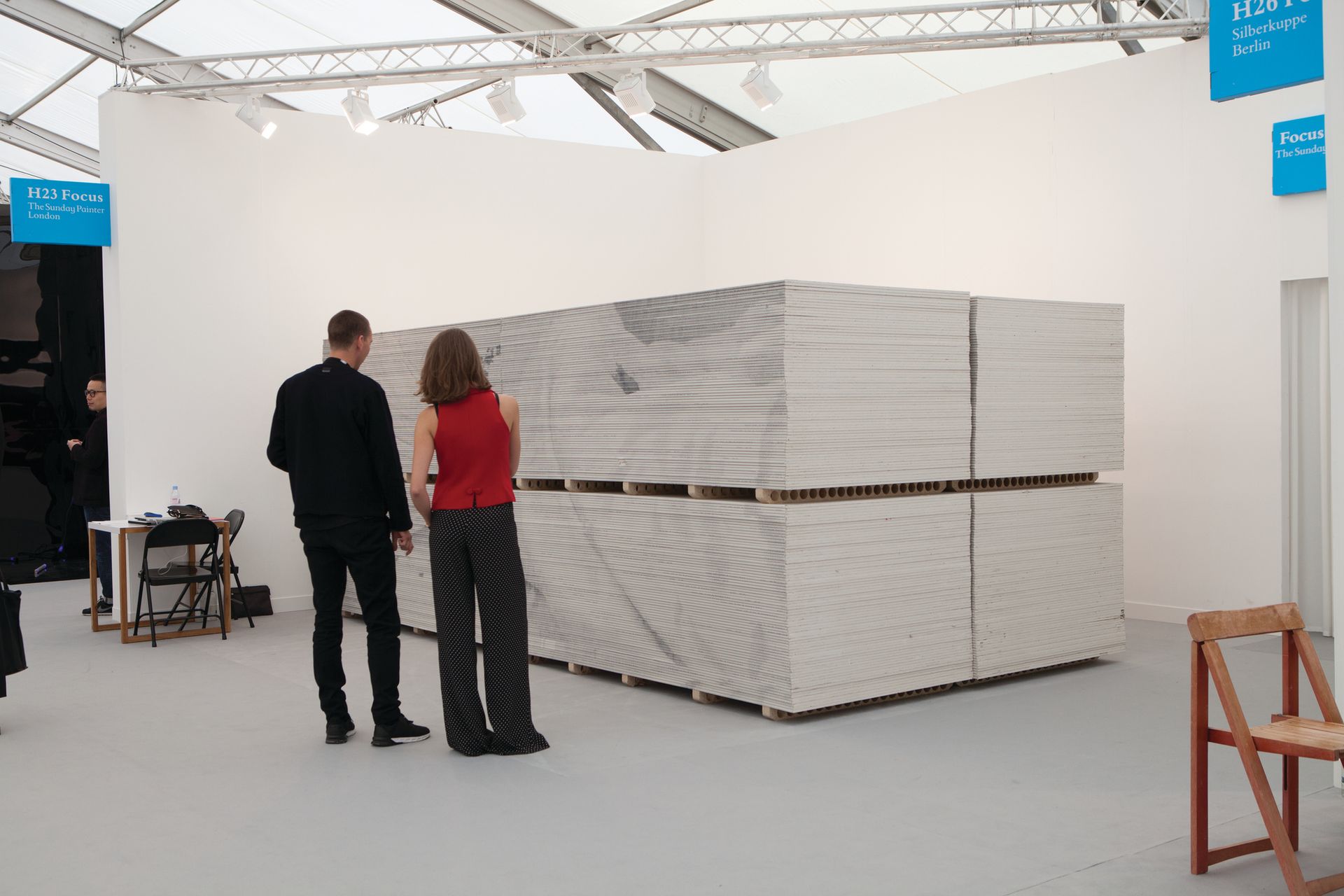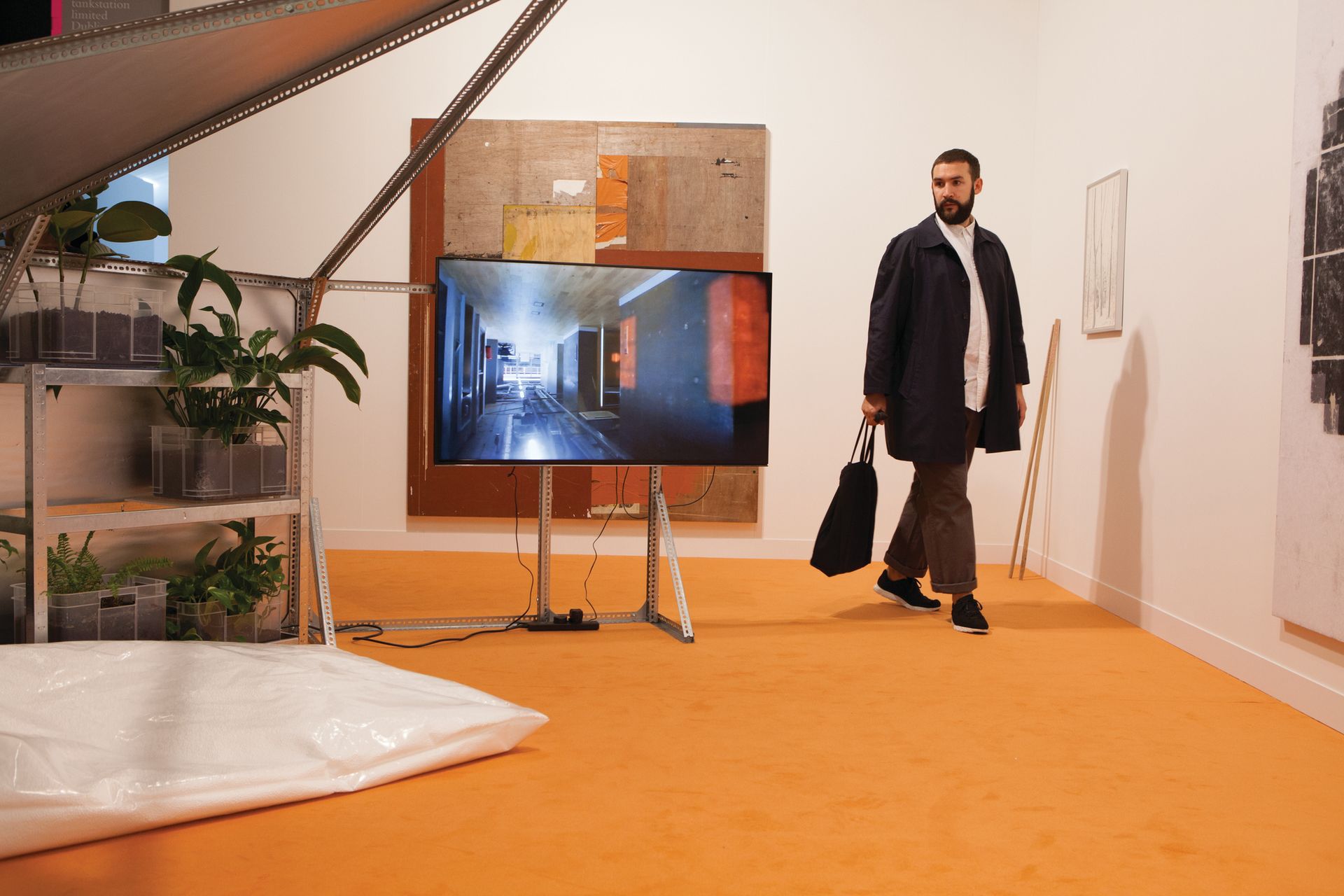Various artists, L’atelier d’artistes
Hauser & Wirth
The artist’s studio is a mythical place, long fetishised as a site of divine inspiration and long hours of labour. But what if this toil was shared by many hands, coming together to create the ultimate super-artist? This is, in a roundabout way, what is happening at Hauser & Wirth’s stand—a major talking point at the fair. Packed with works by around 50 artists from the gallery’s stable, L’atelier d’artistes is the fictional studio of a fabricated artist, complete with details hinting at his life. He wore lederhosen as a child, has a photo of his mother pinned to the wall and likes mushroom soup. “It’s deliberately a construct,” says the gallery’s director Neil Wenman, who has curated this tongue-in-cheek version of a studio-museum. “You can see the full width and depth of his practice.” The studio includes a sculpture by Hans Arp, assemblages by Phyllida Barlow and one of Paul McCarthy’s dildos. Prices range from £2,000 to £3.5m, the former being a painting by the artist and gallery technician Gary McDonald—one of the first items to sell.

Lloyd Corporation
Carlos/Ishikawa and Frieze Live
Lloyd Corporation—the British-Norwegian duo of Ali Eisa and Sebastian Lloyd Rees—takes on the more peripheral work in Western society: jobs with long hours, poor pay and little room for progress, often taken up by immigrants. Their project consists of various people dotted around Frieze: one wears a billboard emblazoned with the words “Be Here, Be Everywhere” and another masquerades as a fake Louis Vuitton bag salesman. They had planned on having a club-style attendant with lollipops and cheap cologne in the toilets, but Julie Verhoeven beat them to the Frieze lavatory slot.

Rob Chavasse, Marsh Lane Diversion (2016)
The Sunday Painter
Like many young artists, Rob Chavasse worked as a gallery technician to supplement his career. So he is no stranger to the material used in his latest piece—13.5 tons of plasterboard. The buyer of Marsh Lane Diversion (2016), which is the heaviest work ever to be exhibited at Frieze and required a reinforced floor, will not be acquiring the actual object. Instead, their £20,000 will “buy the action”, says The Sunday Painter’s co-director Will Jarvis. The gallery’s stand, and any prospective gallery space, acts as a temporary depot for the plasterboard between the factory where it is made and the distribution centre where it will be sold on. Chavasse’s work is about “hijacking systems”, Jarvis says. “The work is only ever seen in a paused state [in its journey].”

Yuri Pattison, half relief shelter zone for user, space (hexayurt configuration) 2016)
Mother’s Tankstation Limited
Frieze Artist Award-winner Yuri Pattison’s installation mimics the relaxation areas in London’s new breed of shared workspaces, marketed as dynamic locations for creatives to work and to network. The piece plays on the idea of the “controlled relaxation” zones common to these offices, says the gallery’s artist liaison, Emer Lynch. The work includes plants approved by Nasa for their air-filtering properties. Despite these novelties, the spaces do not work. “They’re too contrived, too sterile,” Lynch says, adding that Pattison’s research into new 24-hour working habits in London led him to the conclusion that “London is still very much a nine-to-five city”.

